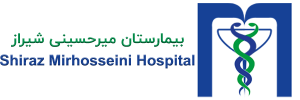Stroke
Stroke:
Definition: A stroke, a cerebrovascular accident, or what is now called a stroke, is a sudden decrease in brain function due to impaired blood flow to a part of the brain.
Types of strokes: Strokes are divided into two main groups: 1- Non-bleeding (85%) 2- Bleeding (15%)
Cause of stroke: Stroke without bleeding due to: 1- Blood clot in the blood vessels of the brain or neck
A blood clot or other substance that has moved to the brain from other parts of the body
3- Decreased blood flow to a part of the brain
Bleeding stroke is a rupture of blood vessels in the brain associated with bleeding into the brain tissue or other surrounding spaces. In both types of stroke, the main cause of cerebral hemorrhage is a temporary or permanent decrease in movement, thinking, memory, speech or senses.
Symptoms of a stroke: Depending on the location, size and amount of blood flow to the brain, a wide range of brain defects can occur. Signs and symptoms may include numbness or weakness of the face, arm, or especially on one side of the body, changes in mental state, difficulty speaking or understanding speech, visual impairment, difficulty walking, confusion, or loss of interaction and coordination. Severe and sudden headache.
Dangerous symptoms of myocardial infarction: hypertension (the main) cardiovascular disease, rheumatism, high cholesterol, obesity, high blood pressure, diabetes, smoking, alcohol, drug abuse (especially cocaine)
Treatment: Medical treatment is the administration of drugs that dissolve blood clots. During surgery, the only treatment is for hemorrhagic strokes that remove the clots. It is very important to note that drug treatment for hemorrhagic and non-hemorrhagic strokes is completely different, and for the best treatment, the correct diagnosis must first be made.
Patient education: Be on the healthy side of the visual field when training due to visual impairment. Be instructed to turn your head towards the healthy field to compensate for visual impairment and preferably wear glasses. Avoid driving at night or other dangerous activities in the dark.
Due to the weakness of the face, arms and legs, make objects available to the patient. Exercise to increase the movement, strength and usability of the affected party.
◄ Due to imbalance and limping, the legs are out of balance and there is a need for a cane. Never walk without a support device.
◄ Use other communication methods due to the difficulty in word formation. Give the patient time to respond to verbal communication, it is best to repeat the sounds of the alphabet daily.
Because of difficulty swallowing, make sure you have a swallowing reflex before eating or drinking. You need help eating. Place food on the healthy side of the mouth
Give. Allow enough time to eat.
Due to short-term and long-term memory loss, it is better to be aware of time, place and situation. You can use familiar tools such as family photos and pleasant topics.
. Try to control emotional disorders such as feelings of separation, isolation, depression, aggression, anger, and so on.
. Try to achieve maximum independence in self-care by regular exercise to prevent further damage to the musculoskeletal system. In particular, exercise and movement exercises are effective in preventing venous blood record and the formation of clots in the walls of arteries.
